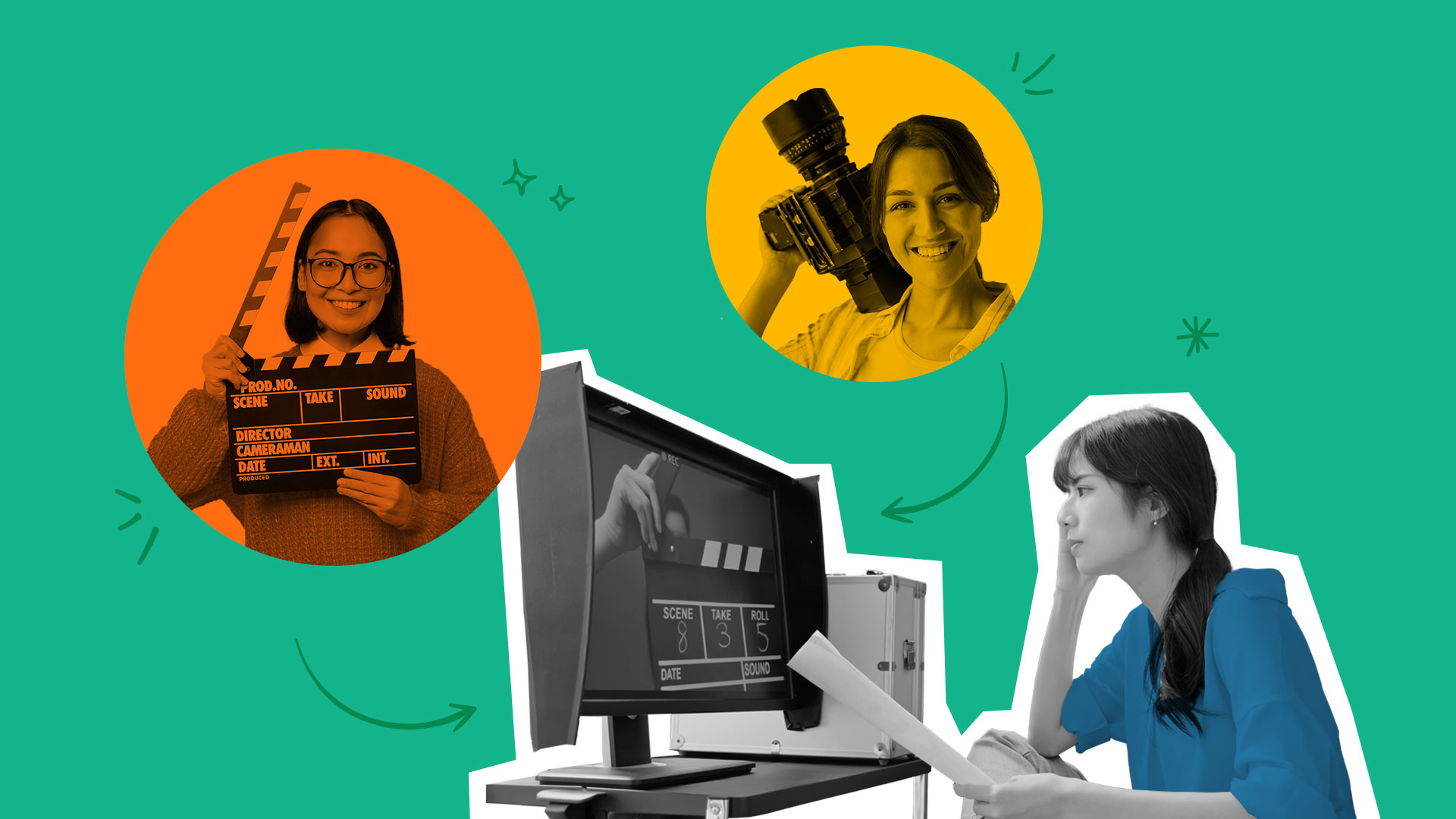8 Video Ad Creative Trends That Have Emerged Since March 2020

This blog on new video ad creative trends that’ve emerged since March 2020 is part of a series of blogs diving into how the advertising landscape has been impacted by the COVID-19 pandemic:
- How Adland Has Evolved During the Pandemic
- Video Marketing Habits We’ve Picked Up Since March 2020
- Covid Safety Tips for Video Production: Omicron Edition
- The Necessity of Video in Hybrid Work Spaces
- The Resurgence of Out-of-Home Advertising
As we enter year three of the COVID-19 pandemic, much has changed in the world. Like most people, you’re probably wondering what’s going to prove to be a lasting change and what’s going to revert to the pre-2020 status quo.
The changes the world has experienced are immediately evident than in the advertising and marketing worlds. Face it, the way we consume content has fundamentally shifted. Linear TV and in-person cinemas are still titans of the industry, but consumers have grown more accustomed–and frankly, are now demanding–media they can watch at home on Connected Televisions, streaming services, computers, and smartphones.
But it’s not just entertainment that has been impacted. The ways in which we run our lives has been totally upended. We work from home now, we cringe at the first uttering of the words “return to office plan”, we balk at the idea of wearing hard pants again.
While most people may be conditioned to that WFH life and the fact that they can get literally everything from the comfort of their couch, marketers still face a tall order gaining the trust and attention of these captive home audiences.
How do you do it? By refocusing on your video ad creative, which has also gone through it’s on unique shifts since March 2020.
Here are a few of the emerging trends we’re seeing in video ad creative. They’re not disappearing anytime soon — and you, as a marketer, would be wise to heed them.
1. Diversity in Ad Creation
Diversity marketing is not just a passing fad. Research shows that diversity is simply good for business, allowing more potential consumers to connect with a brand or piece of content.
It’s critical that diverse casting reflects the reality of the society in which people live. Indeed, 71% of audiences expect brands to promote inclusion in their advertising. With that as a given, the challenge remains how to do it in a way that feels authentic. You should consider the following:
- Diversity should affect the kinds of stories brands tell. It should not be done by just placing extras in the background with slightly different looks. It should also be a concern regarding the creatives behind the scenes, to craft stories that have real, authentic resonance.
- Diversity means seeing people as three-dimensional individuals. This is true even in short advertising spots. It’s really important to consider what diversity authentically means for your brand story. How can it add to your brand, rather than having it feel like a superficial addition?
- Cast a wider net when it comes to showing groups that are still under-represented. Statistically, these groups include the disabled and the LGBTQ+ community. This inclusion can be achieved in entertaining and appealing ways. This year’s newly-minted Best Picture Oscar winner, CODA, was able to entertainingly bring audiences into the world of deaf culture. It felt fresh to see a community onscreen audiences maybe hadn’t fully engaged with before. Similarly, diverse stories can make a brand’s narrative feel novel and engaging.
2. Ethically-Minded Ad Copy
Similarly, consumers want to support brands that align with their beliefs. With so much going on in the world — climate change, discussion about structural racism, the pandemic, war in Ukraine — it can feel evasive for advertisers to not engage at all with global events.
During the past two years of the pandemic, consumers have had time to reflect on what they believe and how they want to act going forward. Socio-political messages that might have seemed out of place in earlier years suddenly felt relevant and, indeed, urgent. At the same time, this can be done elegantly or clumsily. A thoughtful approach here is always best, rather than a hastily-written apology or clarification after the fact.
3. Influencer Advertising (or, Advertising Influenced by Influencers)
One result of consumers spending more time on their phones during the pandemic is that they trust influencer-style content and user-generated content (UGC) like testimonials and how-to videos more than lavish, impersonal productions. COVID advertising restrictions also helped accelerate the growth of UGC, often shot simply on a phone without large crews. Other varieties of UGC include vlogs, reviews, and YouTube videos, which can have their visual style and structure distinct from Facebook videos.
Consumers want what feels like an intimate, personal connection with influencers on platforms like TikTok and Instagram. In the coming years, brands of all sizes are likely to remain dependent on influencers. The reasoning behind this is explained by the concept of social proof, popularized by psychologist Robert Cialdini in the 1980s. “Social proof” means that when consumers see influencers enjoying a product, it encourages them to adopt that lifestyle for themselves. As a consumer, you come to believe that these influencers are doing something the right way, which should be emulated.
If your brand can’t afford the services of an influencer or celebrity, that’s alright, because it’s possible to create your influencer-style ads and make your UGC-style content.
4. Data-Driven Refinement
The third-party cookie may be on its way out, but with the availability of rich data on your ads, it’s almost critical to keep an eye on your content to continuously improve its conversion rates and overall effectiveness.
This can be made cost-affordable if you creatively shoot content in one batch, and then repurpose it across different platforms — Instagram, web commercials, TikTok, and so on. Rather than guessing, you can simply see what connects with your audience, and make continuous refinements and improvements.
5. Augmented Reality
It may be a while before shoppers feel fully comfortable spending hours in the mall, trying on clothes again. With augmented reality (AR), consumers can:
- “Try on” pairs of sunglasses
- See how furnishings will look in their homes
- Try out different wallpaper and paint colors for their walls
They can do all these things without leaving the comfort of their homes, which is both appealing and time-saving. AR brings the fun of lenses and filters on Instagram, Snapchat, and TikTok into the real world.
AR offers a fun and immersive experience, helping to gamify shopping. It could even help turn shopping into an enjoyable activity for people who don’t love the task of trying to find new homewares and decor. It also takes a lot of the guesswork out of wondering “will this go here,” while providing brands with more opportunities to push related goods.
Like it or not, millions of people are already spending time in the metaverse. Why not sell them things while they’re there?
6. Social Media and Livestream Shopping
Maybe you’ve followed one or two designers you like on Instagram. Like clockwork, you now get alerts telling you there are new styles to buy — that’s right, the old-fashioned QVC-style way of selling remotely has been reborn over the pandemic. The selling is now done via social media and livestream shopping opportunities that feel frictionless. It can feel less pushy than home shopping network-style broadcasts since during COVID even high-end fashion labels had no choice but to go online. Additionally, social media allows consumers to follow their interests, so it feels more organic as an approach.
Livestream events and shopping alerts connect consumers directly to the aspirational world of brands they might like — such as flowing caftans by the beach, or drinks being poured at a cool nightclub event. It’s easy to then buy via one or two clicks on your phone — one could argue that it might even be too easy.
There are a few different models available to marketers via social media shopping settings. Perhaps the most impactful is the style used by designers like Batsheva, a designer with a large Instagram following. Batsheva’s IG account and her video stories feature celebrities wearing her dresses and looking glamorous. An easy shoppable link button takes you to the store where you can simply buy a dress or two.
Related: Social Media Video Ad Specs
7. Remote Production
Remote video production was adopted during the pandemic in response to the obvious need for smaller, socially-distanced crews. By using video conferencing software, crew members or any advertising stakeholders can actively participate during a shoot — even if they’re halfway across the world. This has pluses beyond the obvious health benefits. It opens up a world of resources and higher production values. You could film an ad spot in Buenos Aires from LA, for example, giving it a more interesting look and also taking advantage of the time difference to get longer daylight hours and possibly lower local crew rates. s
Remote direction and production of commercials used to be discounted because it was considered impossible to have as much creative control or ability to supervise from afar. That’s not true anymore, as everyone’s had to adjust to the new reality of remote work, and increasingly sophisticated and widely available communications systems have accustomed co-workers to remote collaboration. You can also take advantage of the global marketplace to connect with talented crews and artists all around the world — an exciting time to be crafting a campaign.
8. Silent Videos
This video marketing trend is a simple acknowledgment of the fact that most consumers don’t listen to the sound when they play videos on their social media accounts. Videos should be constructed for easy viewing and absorption without audio. That could mean:
- Clear, fun onscreen graphics
- Better visual storytelling — think of silent movies that tell you everything you need without dialogue
- Bold and minimal titles and captions to keep the message clear
As with UGC, many of the best examples of silent or audio-optional video content come from influencers creating their reels and TikToks. The best option for marketers is to either emulate or partner with people whose styles are garnering millions of views.
Do More with Video
Learn how we can help you produce more quality videos affordably and at scale.


